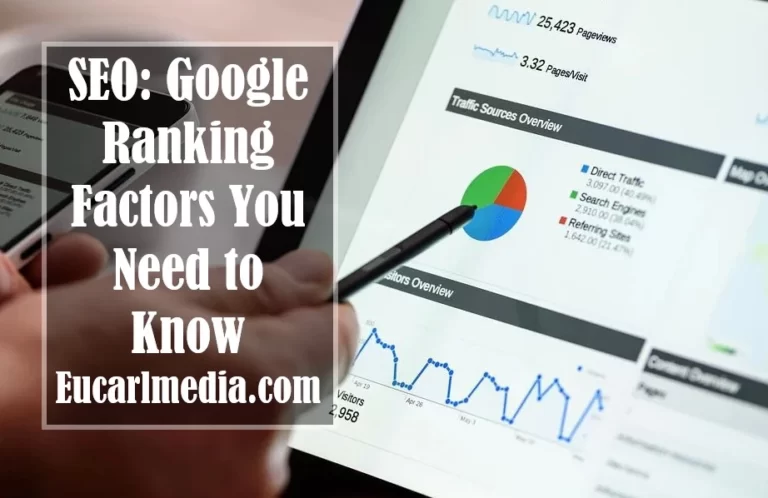Beginner’s Guide To SEO: Easy Guide For Newbies
Due to the high level of competition that exists today, it may be quite difficult to optimize a new website to satisfy the high requirements of SEO. This is because there are so many other websites competing for users’ attention.
So, if a company wants to get a lot of attention online in the early stages of its growth, its website needs to have a professional level of search engine optimization (SEO) services.
But if you don’t know much about the professional level of SEO, don’t worry; this article, which is a beginner’s guide to SEO, will walk you through the process step by step.
However, in this article, we will go over all of the fundamentals of SEO and provide a step-by-step guide to the process. We will also talk about the many strategies you need to use if you want to learn more about SEO.
If you want to create a thriving website that will always rank on the first page of Google’s SERPs, then this comprehensive guide to SEO is exactly what you need. That being the case, you won’t want to miss it.
What Exactly Is SEO?
Search engine optimization, or SEO for short, is the process of improving a website’s overall functionality to increase its exposure and the amount of organic traffic it gets from search engines.
In general, search engine optimization boils down to nothing more than achieving a high ranking in organic search results. However, the search results are divided into two different parts: paid Ads and organic listings.
The Ads deal with search engine marketing, also known as SEM, which entails shelling out a set sum of money for your business to get to the top of the pages that are returned by various search engines.
The SEM is different from the SEO we are talking about in this content. This SEO strategy is built on organic traffic that is completely free and does not require any type of payment in any circumstance.
“How do I start learning SEO?” Since you are now aware of the benefits of it, you need to immediately start thinking about this question. But don’t worry, because our beginner’s guide to SEO will get you through. Let’s go!
The Step-by-step Beginner’s Guide To SEO
Without further ado, let’s dive into the specifics of the beginner’s guide to SEO. This advice has been broken down into seven essential stages that you need to start taking as soon as you possibly can.
Step 1: Understanding Search Engines

Before you can even begin to learn about SEO, you need to have a fundamental understanding of how search engines function. also, try to comprehend the Google ranking factors.
On the other hand, in this introduction to the beginner’s guide to SEO, a search engine is defined as a piece of software that assists in the process of finding information on the Internet. A prominent example of a search engine is; Google.
These search engines are extremely important to the entire SEO strategy, even though they use distinct methods to process the information they find. These processes are:
- Crawling
- Indexing
- Selecting a few of the findings
- The next and final step is displaying the results to the users.
Step 2: Carry Out Research On The Keywords
Since the appropriate utilization of keywords is what decides SEO, our next step in this beginner’s guide to SEO needs to be learning how to conduct expert keyword research. This should be our second step.
You need to be aware of the best places to look for appropriate keywords to employ on your website. On the other hand, SEO professionals can locate and create their keywords in a variety of different ways. They are as follows:
- Based on recommendations made by Google and other search engines
- SEO tools that are both intelligent and free, for example, SmallSEOTools and SEO ranking goosuggest.com.
- By employing a variety of keyword metrics
Always keep in mind, as you work through this beginner’s guide to SEO for keyword research, that our goal is to locate keywords that have a high search volume yet a low keyword difficulty.
When researching keywords, the below is the most important thing to keep in mind:
- The search volume of the keyword
- The keyword difficulty
- The Pertinence of the Keyword
Step 3: Content Optimization
In this beginner’s guide to SEO, you can’t just gloss over the importance of creating content that is optimized for search engines like Google, because the content will always be considered king if you want to generate organic traffic.
On the other hand, because of this, we felt compelled to include in our guide to SEO the most effective and tried-and-true technique for developing SEO writing tips. The following is a list of some of the available strategies:
The Determination Of A Niche
Now, the first step in the process of developing content that is optimized for SEO is to determine the specific niche area that you will be writing about.
Aim On Optimizing For Keywords.
After that, move on to the following stage, which is to select the focus and seed keywords that will be used for the optimization of your website.
The Quality Of The Content
Now that we have the keyword selected, the following step is to optimize it by generating quality content. You will have an advantage over other enterprises in the industry as a result of this.
Step 4: On-Page And Technical Seo

This particular SEO strategy will be featured in our beginner’s guide to SEO as well, so stay tuned for that! You need to take a comprehensive look at the on-page and technical parts of SEO.
These technical features comprise a huge network of internal linking, in addition to backlinks from other websites. In addition to that, your sitemap needs to be optimized to its best potential.
We will also recommend that you focus on improving your HTTPS in the portion of the tutorial that is dedicated to SEO. Your website also needs to be designed such that it is user-friendly on mobile devices to make indexing easier.
Step 5: Backlinks And Link Building
Link building and backlinks are the topics that will be covered in this, the fifth phase of our beginner’s guide to SEO. When it comes to improving your skills in SEO, this is one of the most crucial measures you can take.
Backlinks are a network of links that connect two or more distinct web pages. If Page A includes a link to Page B within its text, this indicates that Page B benefits from the presence of a backlink from Page A.
By this guide to SEO, we have several distinct sorts of links, including internal, external, and nofollow connections. You could get additional information about this connection by enrolling in a free SEO course for beginners.
Step 6: Analytics And Metrics Make-Up
Because we just learned how important analytics and metrics are to improving SEO performance, we have expanded the scope of our beginner’s guide to SEO to include instruction on these topics.
We have covered a number of the analytics tools that you ought to utilize in this guide to SEO that you are reading right now. The first tool is Google Search Console, which gives you information about how well your website is doing.
Google Analytics comes in at number three. It is a free tool for websites that monitors and reports the overall traffic that a website has been receiving so far from all regions. This traffic comes from all around the world.
The rank tracking tool has also been included in this beginner’s guide to SEO that we have put up. The name of the tool tells you that it is a resource that gives you your website’s exact ranking as well as its domain authority.
Read Also: What Is Keyword Cannibalization In SEO, How To Avoid It
Step 7: Monitor Your Progress And Results

After you have finished following the steps in this step-by-step tutorial, which are stated above, we will put this beginner’s guide to SEO to an end by advising you to always monitor the progress that you have made in SEO.
To keep track of your development, you have access to several useful tools. You might begin tracking the performance of your site’s keywords by using the application called “Authority Labs,” which is available to you.
You might also make use of Google Analytics in this circumstance; by doing so, you will be able to monitor not only the activities that visitors carry out on your website but also the results of your efforts to attract organic traffic.
This beginner’s guide to SEO will come to a close with a discussion of DataForSEO. It’s a piece of software that keeps tabs on the unprocessed SEO data generated by your website and delivers it to your mailbox so you may examine it.
Summarizing The Beginner’s Guide To SEO
If you follow this newbie’s guide to SEO and use the methods in your SEO writing, your website’s organic click-through rate (CTR) and the amount of organic traffic it gets will both skyrocket with immediate effect.
When putting these methods into practice, it is important to keep in mind that you may not notice an immediate change to your website because the growth will be gradual and consistent.
For the time being, that will have to do. As usual, please leave your thoughts in the comments section below and explain what you’ve done to improve your SEO strategy.
We, the members of the EucarlMedia SEO Team, are grateful that you have taken the time to read this guide to SEO (search engine optimization). Keep an eye out!






